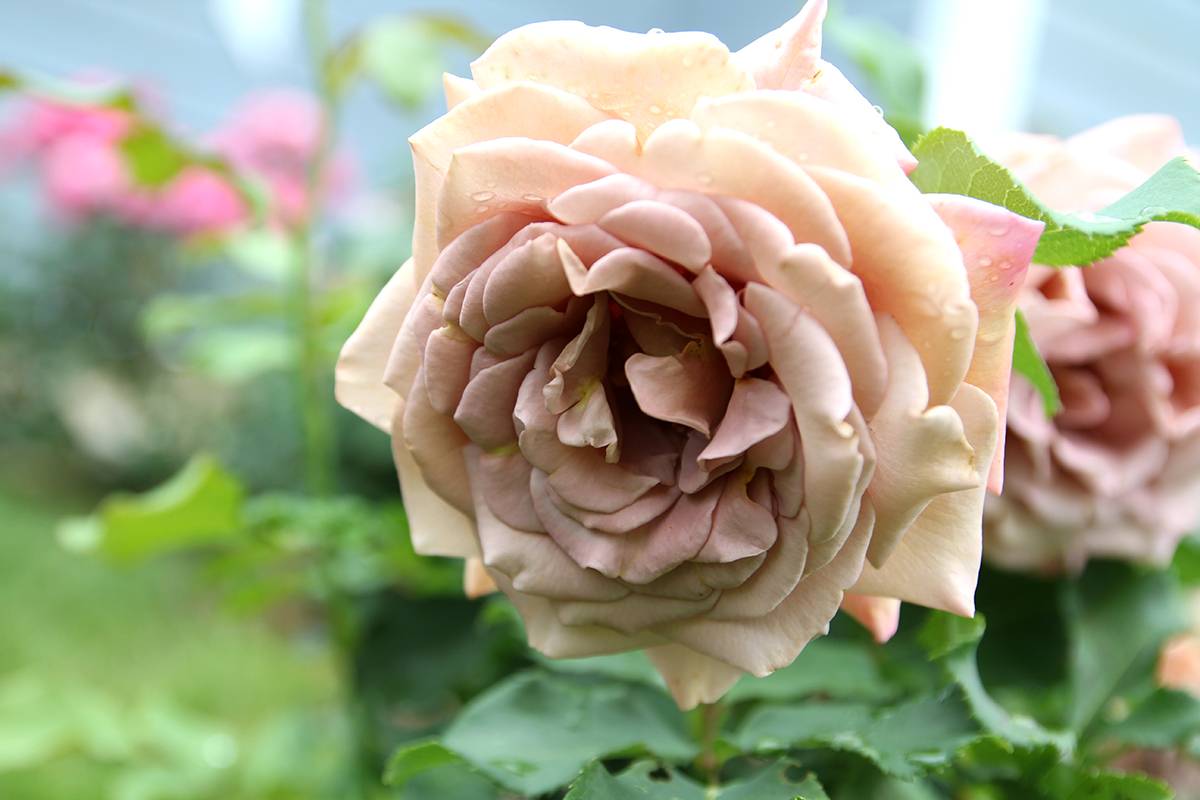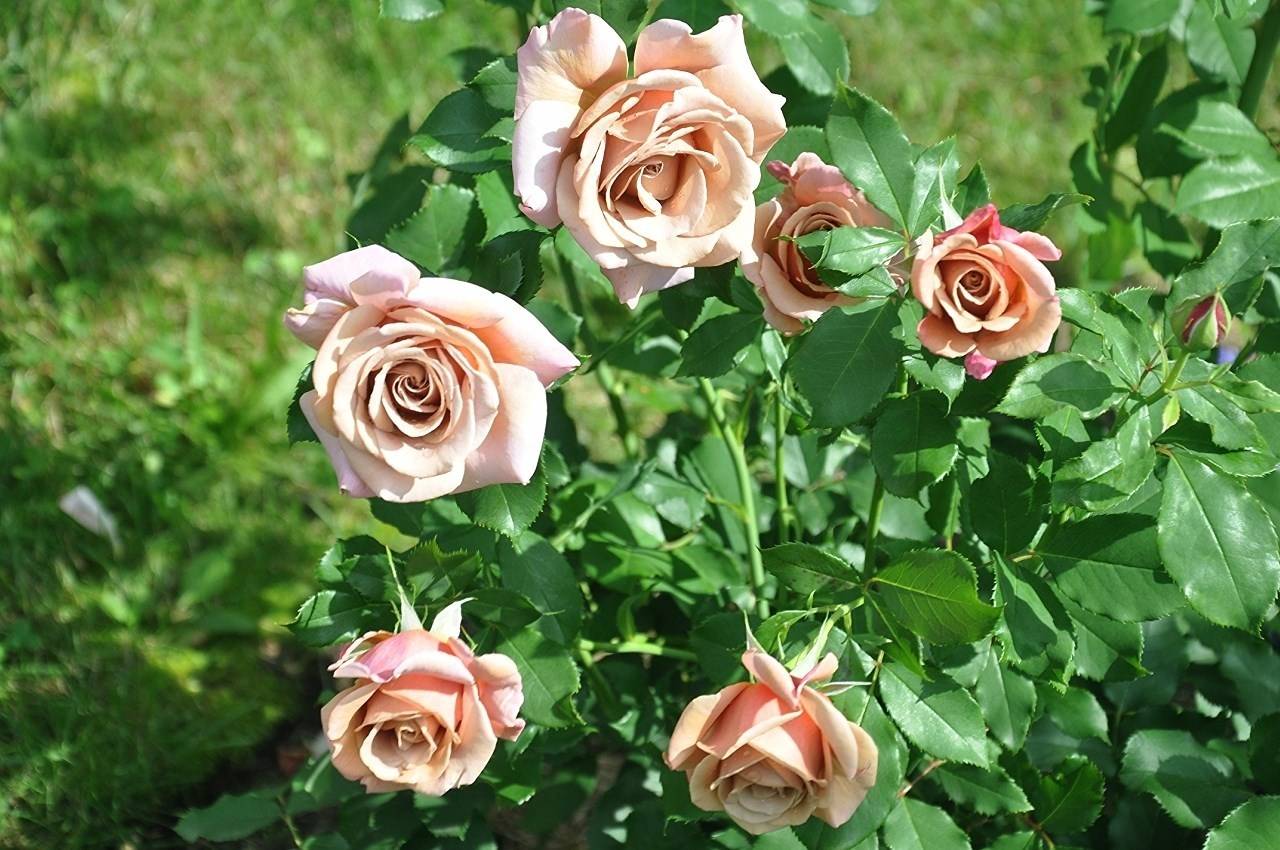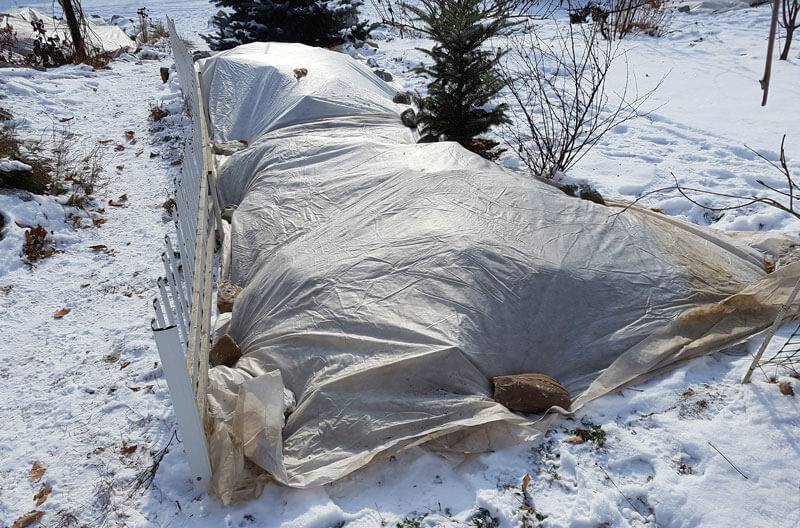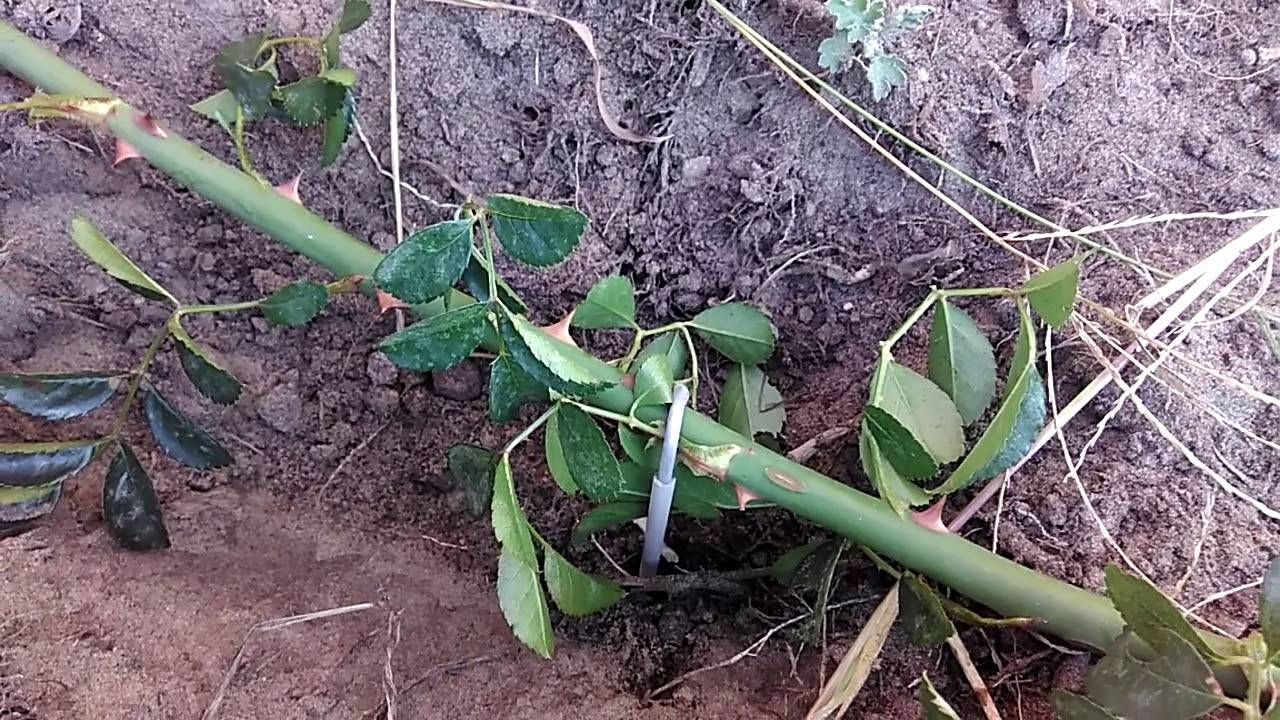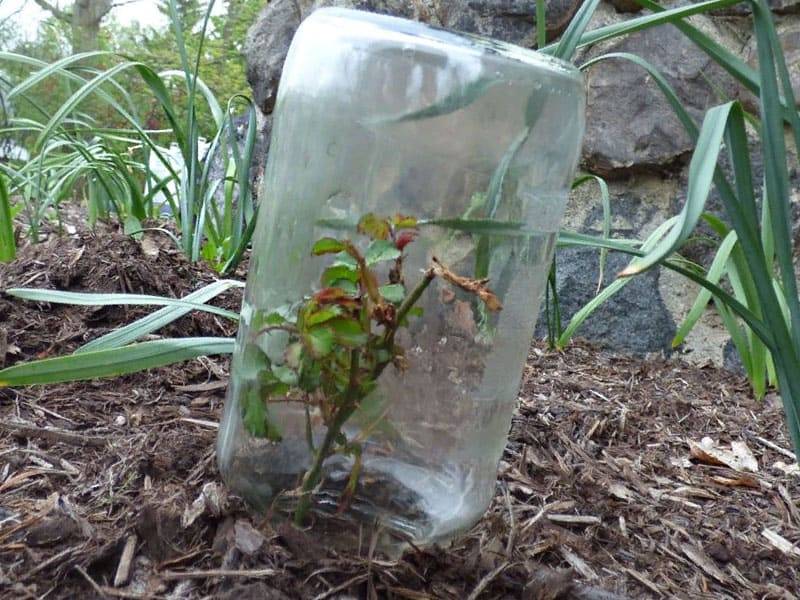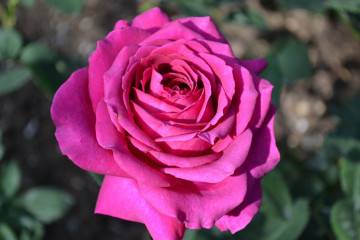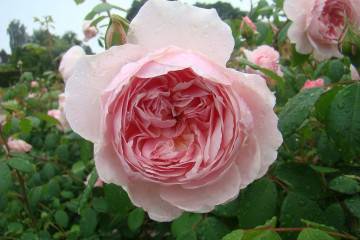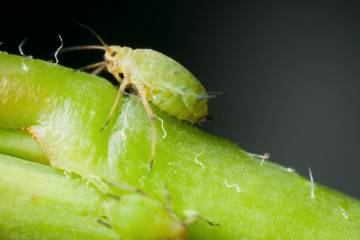Rose Coco Loko (Koko Loko) - description of varietal flower
Content:
Floribunda rose with flowers of a unique shade of coffee with milk and a delicate pink color is a variety of the American selection of Coco Loko. Medium-sized buds have a pleasant aroma and look unusually impressive in the garden and when cut.
Rose Coco Loko (Koko Loko) - what kind of variety, history of creation
Floribunda Coco Loko rose bred in 2008 in Christian Bedard's nursery in the USA (Christian Bedard). The genetic material for the hybrid was Blueberry Hill floribunda and Pot O'Gold tea rose.
The seedlings of the new variety were marketed in several countries in 2012 from the nursery of Weeks Wholesale Rose Grower under two names - Koko Loko and Soul Sister, and the rose is cataloged under the registration name Wekbijou.
Brief description, characteristic
The floribunda bush (floribunda) has a not very high height - up to 90 cm, and reaches only 70 cm in width. The shoots are densely covered with large light green leaves with a semi-glossy sheen. The stems are covered with a few thorns.
On average, the diameter of a fully opened flower is about 8 cm. Buds are formed at the ends of annual shoots in groups of 1-3 pieces. Each corolla contains 26-40 petals. During dissolution, the color smoothly changes from milk chocolate to a lighter one, going into pink or lavender. It can also change hue, depending on the weather and humidity.
Advantages and disadvantages of the variety
Strengths of Coco Loco:
- Flowers have a unique color.
- The buds do not fade under the summer sun.
- The flowers are rain resistant.
- Crohn has a very high resistance to powdery mildew and medium - to black spot.
The disadvantage is not high winter hardiness. Without shelter, a rose can winter at temperatures not lower than -18 ° С, and with shelter - up to -23 ° С.
Use in landscape design
The bushes of this variety are very beautiful in single plantings. If you include them in the composition of the rose garden, then they look most advantageous next to such varieties as Ametista (large peony flowers with a rich amethyst hue) and Lavender Pinocchio (a companion variety with light lavender-chocolate tones). Elegantly Coco Loco looks against the background of blooming lavender, sage and catnip.
Growing a flower, how to plant it in open ground
A medium-sized floribunda is a category of roses intended for decorating borders in gardens. They are traditionally planted in the foreground along paths and in recreation areas. Long flowering also favorably distinguishes the Coco Loko rose.
In what form is the landing
Nurseries sell 2-3-year-old seedlings, sometimes grafted onto rose hips to increase winter hardiness.In spring, they are bushes with shoots no more than 40 cm high, covered with low melting point wax. In the flower bed, the wax will quickly melt, and the buds will start to grow.
Bushes for autumn planting must have foliage. If the seedling is in a container (closed root system), then it is planted at a convenient time during the whole warm season.
What time is the boarding
Bushes planted in the spring before the buds dissolve will be slightly late with the first flowering in comparison with the bushes of last year's planting, but their chances of successful rooting are higher. Usually, planting is carried out after warming up the soil to a temperature of +10 ° C. In autumn, they are planted 3-4 weeks before the expected frost, so that the rose has time to take root.
Location selection
The Koko Loko cultivar is lush blooming only in sunny areas. Low bushes do not tolerate strong winds, so it is advisable to choose a place protected from the prevailing wind direction.
How to prepare the soil and flower for planting
It is best to replace heavy and humus-poor soils before planting, therefore, not the excavated soil is poured into the planting pit, but a separately prepared nutritious and loose soil mixture. Its acid-base reaction is pH = 5.5-6.5. For looseness, sand, vermiculite, wood ash, a little peat, humus are introduced.
Bushes with long shoots are cut off - 2-3 buds are left from each fork. Seedlings with an open root system are left in a bucket of water in the evening in order to properly moisten the roots. If a rose was bought in a container, then it is watered very abundantly before planting.
Planting procedure step by step
The process of planting a seedling consists of the following stages:
- The planting hole is dug 50-50 cm in size and 50-60 cm deep.
- A layer of 5-10 cm of sand or fine expanded clay is poured onto the bottom.
- The seedling is deepened, lowering the root collar 5-7 cm below the ground level.
- The roots are covered with soil mixture.
At the end, watered and be sure to mulch.
Plant care
The main attention of the rose is required during the flowering period, when its need for watering and fertilization is maximum. In spring and autumn, preventive treatments for pests and diseases are carried out, and pruning is performed.
Watering rules and humidity
If during the warm season it rains regularly (every week), then artificial irrigation can be dispensed with. In dry times, watering is required 1-2 times a week at the rate of 10 liters of water for each bush. The soil should be slightly moist, but dry out periodically.
Top dressing and soil quality
During the period of bud dissolution, the rose is fed with ammonium nitrate (30-40 g per 10 l of water). Subsequent top dressing is carried out with an interval of 2-3 weeks with phosphorus-potassium fertilizer or superphosphate, it is useful to introduce a mullein periodically diluted tenfold with water.
To prevent the soil from drying out, not overgrowing with weeds and remaining loose, it is mulched. Roses are suitable for mulch from pine bark, needles, peat, sawdust.
Pruning and replanting
Prune the rose in the spring, shortening the shoots by a third. This provides a good incentive for active growth. In the summer, damaged and broken branches are pruned. In autumn, shoots with traces of diseases are cut off.
Features of wintering a flower
To protect them from frost, the bushes are covered with agricultural canopy or spruce branches. Do this with the establishment of frosts. They remove the shelter in the spring after the snow has completely melted.
Blooming rose
An important advantage of the Koko Loko cultivar is its long flowering period. In fact, it is continuous with proper agricultural technology.
A period of activity and rest
The first buds bloom in early June. Further, the flowers replace each other almost without pauses.Flowering ends a week before frost with a decrease in air temperature.
Care during and after flowering
In order for the buds to bloom all season without pauses, wilted flowers should be removed in time. In addition, the bushes should be regularly fed, since flowering requires a lot of nutrients.
What to do if it does not bloom, possible reasons
Floribunda usually does not bloom in the shade, since a large amount of sunlight is the first condition for the formation and dissolution of buds. If there is enough light, then the problem is in the roots. They can rot due to waterlogging, suffer from drought, or lack nutrients.
Flower propagation
The best way to propagate Coco Loko is by cuttings or layering. The hybrid does not propagate by seeds.
When is it produced
The best time for cutting cuttings is early June. Terminal shoots with green bark 12-15 cm long with 3-4 buds are suitable. Layers are added dropwise in May.
Detailed description
The stalk is cut, shortening its crown. The lower leaves are removed, the upper ones are shortened by half. All cuttings are dropped on the garden bed, each covered with a transparent cap from a jar or cut plastic bottle. Watered, like all roses, so that the soil does not dry out. Rooted specimens are planted in a permanent place a year later in May, and must be covered for the winter.
Layers are made from the lower flexible shoots. They are bent to the soil and sprinkled with a layer of earth. Water is regularly watered at this point throughout the season. If successful, after a year, you can plant a young bush in a new place.
Diseases, pests and ways to control them
The Coco Loko variety practically does not suffer from powdery mildew, but sometimes it is affected by black spot under unfavorable conditions. For protection, the bushes are not planted too heap, leaving gaps for ventilation, they are not poured, and in spring and autumn they are sprayed with Bordeaux liquid or copper sulfate. Aphids and other common pests should be sprayed with insecticide solutions: Aktara, Iskra, Fitoverm.
An exquisite decoration of any collection is the American Koko Loko floribunda rose. Its chocolate-creamy petals cannot be confused with others, and the aroma leaves an unforgettable impression with its sweet sweet notes.
